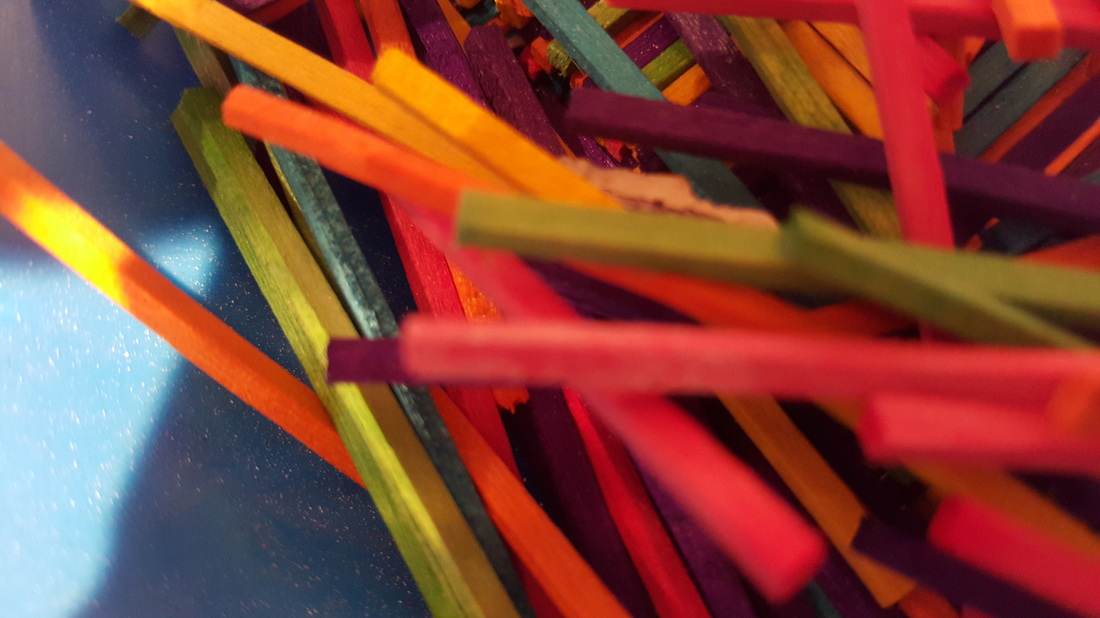Art therapy involves making art alongside a trained art therapist. The art therapist accompanies and supports the child, young person or adult, during a set weekly time, as they learn to use the art materials for expression. Gradually
through this process a relationship of trust is built.
through this process a relationship of trust is built.
Which children might benefit from art therapy & how could it help?
All children go through a variety of experiences some of which they manage, and others that might impact and leave them distressed, for example:
- Bereavement or illness in the family,
- Peer group problems
- Changes of family circumstances
- School issues
Children (even if they are very young) will try to make sense of what is happening while also experiencing their own difficult emotions. For example there may have been a split in the family and while trying to readjust to a new family structure the child may also have overwhelming feel of sadness, anger, loss and perhaps even guilt. Some children may be able to talk to family or friends but for others that's too hard and they don't have words for the feelings that they are experiencing. A regular and consistent space in which the child's expression - whether through art making, creative play, or talking - can be seen and thought about, by someone who is therapeutically trained, can help the child to make sense of their feelings and leave them feeling more ready to cope.
What is an Art Therapist?
An Art Therapist is someone who understands the art process but has a psychotherapeutic training. A common idea is that they analyse pictures, and thereby analyse the child, but the role of an art therapist is not to intrude, but to be non-judgemental and develop a rapport. This process can help the child understand their own feelings and give them
a means of expression.
Does the Child have to be good at art?
No, to be good at art is not important. Any art made is valued and the art therapy room has a varied range of other materials to help the child express themselves. The creation of the picture of the process of play can help the child to make sense of thoughts and feelings, the process is just as important as a finished image.
What happens to the artwork?
Ideally the artwork is stored away safely each week by the therapist, although the child may take it. When the therapy ends the child chooses what they would like to do with anything they may have made.
Will everything be confidential?
The specifics of what is discussed in therapy and the artwork made will be treated as confidential, it is important to be clear that if the child led the art therapist to believe that they, or someone else, were at risk of harm, the therapist would have a legal responsibility to pass this information on. This would most likely involved a conversation with the parent or carer but under rare circumstances other agencies could be informed.
A Parent's Viewpoint
"Discovering Katy was the most important step in helping us and our son deal with a traumatic situation that we suddenly found ourselves in. Having been left by social services pretty much on our own, we set out to find the appropriate help that our son needed. We knew that he loved art, and after some research, found Katy, who practises Art Therapy.
From our initial meeting Katy was warm, friendly, approachable and professional. Her art room is a perfect setting for a child to feel at ease in.
Katy slowly built up a trusting relationship with our son, and over time he was confident enough to divulge important information which Katy then skilfully explained and helped him, and us, make sense of. Over time we could see real progress had been made and it had all been done very gently and patiently, which was what we had hoped.
Katy also spent time with me, his mum, explaining how the therapy was going and provided much needed support.
I really can't recommend Katy highly enough. She's a lovely lady whose expertise and understanding gave us confidence and hope at a dreadful time and I can honestly say I don't know what we would have done without her." Mrs S.



